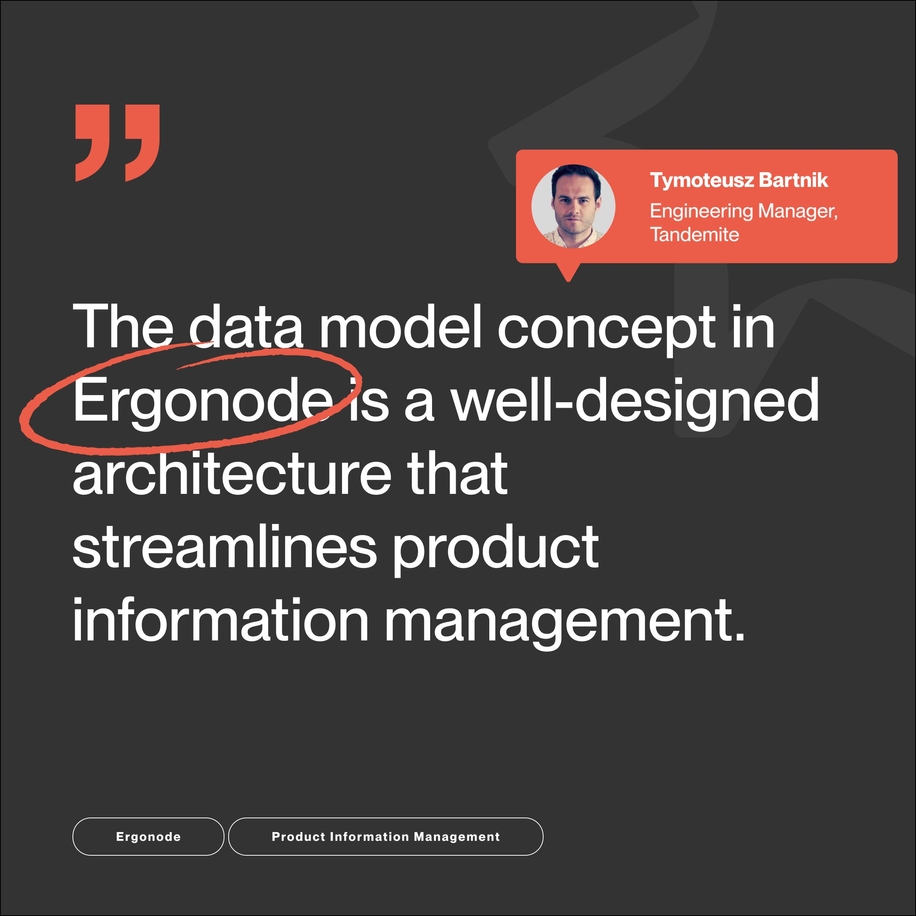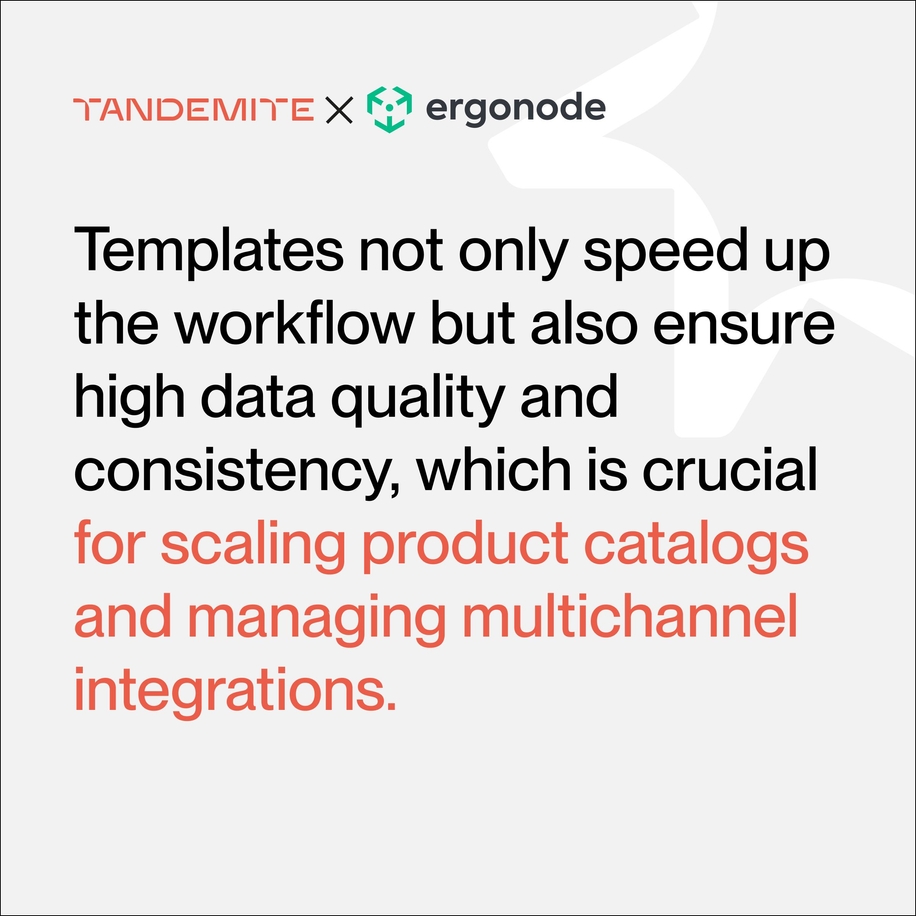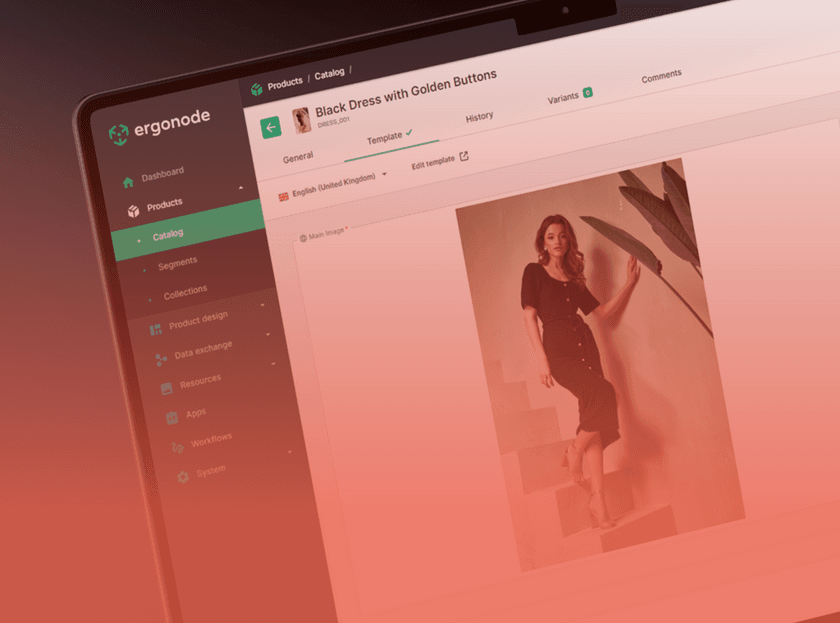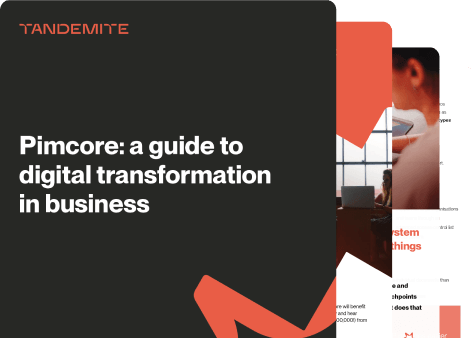To compete in a dynamic market, businesses need tools that speed up their workflow. Ergonode’s product templates are built for that purpose. They simplify daily operations in the PIM system, helping some teams release new collections within hours, while others may face delays stretching into weeks.
Product templates in Ergonode PIM can reshape how you manage your online store’s product data. In this article, we explain how the templates work, share practical examples, and highlight the benefits they offer. Don’t miss our previous post, where we explore even more of their possibilities.
How to build a product template in Ergonode the right way?
Templates in Ergonode play a crucial role in standardizing how product information is entered. They guide you through each required element, ensuring a clean and consistent structure across your catalog. This approach cuts down on errors and simplifies your daily work. Let’s explore how to build one correctly.

Identify the product range
The first step is to understand your product types. Spend some time analyzing your offerings. Are your products simple consumer goods such as T-shirts and mugs, or do they fall into a more specialized category?
Outline the core features of the product (attributes)
After setting the category, focus on identifying the vital pieces of information required to present the product effectively. These essential elements will act as attributes in your product template.
Consider what distinguishes one product type from another. Which features are crucial for each type, and which influence your customers' purchase decisions the most?
Product attribute examples:
- Product name: The name that will help both you and your customers find the product easily.
- Description: Tell customers what the product is, what it does, and why it’s useful.
- Variants: If your product comes in different options (such as color options, sizes, or models), explain those differences here.
- Technical specifications: List objective measurements and material details, such as weight, size, and power.
- Images: Upload clear and accurate pictures to visually present the product.
- Videos: Use videos to give a dynamic view or explain the product’s features and applications.
- Downloadable files: Supply helpful documents like user manuals or technical sheets in formats like PDF.
For instance, important attributes for a T-shirt include name, description, size, color, fabric, and product images. For a mug, key details would be name, description, capacity, design, and whether it’s dishwasher-safe. These are your primary fields to complete.
Best practice: Use attribute names that are detailed and easy to follow. Your goal is to make them understandable to anyone working within the system. Skip the use of abbreviations, generic labels, or unclear terminology.
Choose the correct data format for each attribute
Determine the correct type of data to store in each attribute. Ergonode offers flexible data types that help businesses maintain a clean and structured product database. These include:
- Text fields for both simple labels and detailed product content.
- Units of measure, allowing numeric input for specifications with decimal or whole numbers.
- Date entries to manage time-sensitive information like launches or expiration.
- List selections, where you choose a value from predefined options such as color or material.
- References, allowing you to connect a product to elements like manufacturers, categories, images, or downloads.
This decision supports proper data entry and contributes to a more refined and effective product search and filter experience.
Balance required and optional template fields
You can specify which attributes are mandatory and which are optional when creating a product template. Be mindful that requiring too many fields can extend the time needed to add each product.
Structure attributes using groups and sections
If you have a long list of attributes, grouping them into relevant categories makes the product template easier to understand and use. Start by creating groupings, for instance:
- Basic Information: Name, SKU, description.
- Price and availability: Cost, currency type, stock level.
- Product specs: Dimensions, weight, material.
- Visuals: Photos, videos.
Next, organize these groups into sections, treating each as a “mini-template”. These sections can be mixed and matched to adjust your templates for different product types or sales channels. This modular system simplifies template management.
Grouping attributes also enables precise permission control. At the group level, you can configure visibility, editing rights, and management access for specific users or roles, ensuring that sensitive or critical product data is properly governed.
Use attribute inheritance to avoid repetition
Ergonode allows you to reduce manual work through attribute inheritance. Create a master template with shared product attributes like name, description, and price. Then build specific templates for each product category, which automatically include these base attributes along with extra fields unique to that category, such as size or color for clothing.
This eliminates the need to re-enter the same data repeatedly and helps maintain clean, uniform product information.
Best practice: Design flexible templates to support long-term growth. To ensure your templates serve you well over time, design them with future development in mind. Think about how your inventory might change – new product types, additional specifications, or evolving data needs. In this context, using attribute inheritance can greatly simplify future updates.
Test your new template
When your template is complete, validate its functionality by adding a few test products. Review each field for completeness, confirm the correct data types, and assess how intuitive the form is. This process helps ensure high-quality results and reduces the risk of errors in the final rollout.
Well-planned templates are the solution to messy product data. They form the base of a smooth and scalable system.
We assist you in implementing Ergonode with your company’s structure and goals in mind. You also get full support and professional training throughout the process.
Applying product templates in the real world: Examples from multiple industries
Now that we’ve explained the fundamentals – attributes, product data formats, and templates – you might be thinking, “That sounds useful, but is it relevant to my company?” To give you clarity, we’ve selected examples from various sectors. These show how companies use Ergonode to organize product data and improve day-to-day operations.
Manufacturers of consumer goods
When your company offers a wide range of products used daily by consumers, keeping product information organized becomes a real challenge. Ergonode’s product templates are designed to simplify this task, making it easier to manage large sets of product data effectively:
- Templates tailored for clothing items: For every new hoodie or pair of pants, you can create a ready-to-use template with fields such as:
- Size (data type: dropdown list – XS, S, M, L, XL)
- Color (data type: dropdown list or text input)
- Material (data type: text input)
- Washing instructions (data type: text input)
- Collection (data type: link to another item – e.g., "Autumn/Winter 2024")
- Photos of model and details (data type: file upload)
- Templates tailored for electronic products: Templates help clearly present key information about new devices like smartphones or TVs. They may feature:
- Technical parameters (data type: text or measurable units – e.g., "Screen diagonal", "Resolution", "RAM")
- System compatibility (data type: text input – such as "Works with Android and iOS")
- Warranty coverage (data type: text or selectable options – for example "24-month warranty" or "12 months for business use")
- Included accessories (data type: text)
- Video demonstrations (data type: URL links)
- Templates tailored for household appliances: Refrigerators and washing machines need different sets of data:
- Dimensions (data type: unit – height x width x depth)
- Key features (data type: list selection – such as "No Frost", "Touch Control")
- Energy efficiency class (data type: list selection – A+++, A++, A+)
- Capacity (data type: unit)
Industrial manufacturing companies
In the industrial manufacturing environment, where detailed specifications and structured documents are required, templates help streamline operations and maintain high standards:
- Templates tailored for machines: Each time a new CNC milling machine is added, the template allows users to input key data, including:
- Technical specification (data type: text – a detailed description of product parameters)
- Certificates: (data type: file download – for example, CE marking)
- Compliance standards (data type: text – for example, "Meets ISO 9001 requirements")
- Engineering drawings (data type: file download – accepted formats: DWG, PDF)
- Delivery time (data type: text or numerical field – for instance, "4 to 6 weeks")
- Templates tailored for components: Designed for items like screws or bearings, they include essential fields:
- Material (data type: text)
- Dimensions (data type: unit – diameter, length)
- Compliance with DIN standards (data type: text)
- Manufacturer identifiers (data type: text)
- Templates tailored for tools: In case of drills and grinders, templates prioritize:
- Main application or function (data type: text)
- Power rating (data type: unit)
- Weight (data type: unit)
- Compatible accessories (data type: link to other elements)
B2B e-commerce
B2B ecommerce operates differently from B2C, and product templates should reflect this:
- Fields for wholesale pricing with multiple levels based on order size (e.g., "Price for orders > 10 units:", "Price for orders > 100 units:"), (data type: numerical)
- Manufacturer's product code (data type: text)
- Estimated delivery times (data type: text or dropdown field)
- Minimum order quantity (data type: numerical)
Fashion-focused businesses
Fashion brands must deliver detailed and seasonally relevant product information to attract and retain customers:
- Collections and seasons (data type: select list or linked element)
- Care and washing instructions (data type: text)
- Material composition with fiber percentages (data type: text)
- Clothing cut (data type: dropdown selection – such as "Slim fit" or "Oversize")
- Size charts (data type: downloadable file or text)
Food industry
In the food supply chain, transparent product information supports safe handling and informed decision-making:
- Comprehensive ingredient lists (data type: text)
- Nutritional values (data type: unit – energy, protein, fat, and carbohydrates per 100g or portion)
- Allergen warnings (data type: list selection – such as “Gluten”, “Lactose”, “Nuts”)
- Shelf life / batch codes (data type: date or text)
- Storage guidelines (data type: text)

Speed up your product uploads with Ergonode automation
Template creation requires some initial effort and strategy, but it pays off in the long run with better organization and speed. Rely on our expert team to help you plan every step.
As illustrated in the examples, product templates provide a flexible solution for any industry. They allow you to collect all the necessary product details in an organized manner, which simplifies catalog control, boosts data quality, and gives your business stronger foundations to grow.







